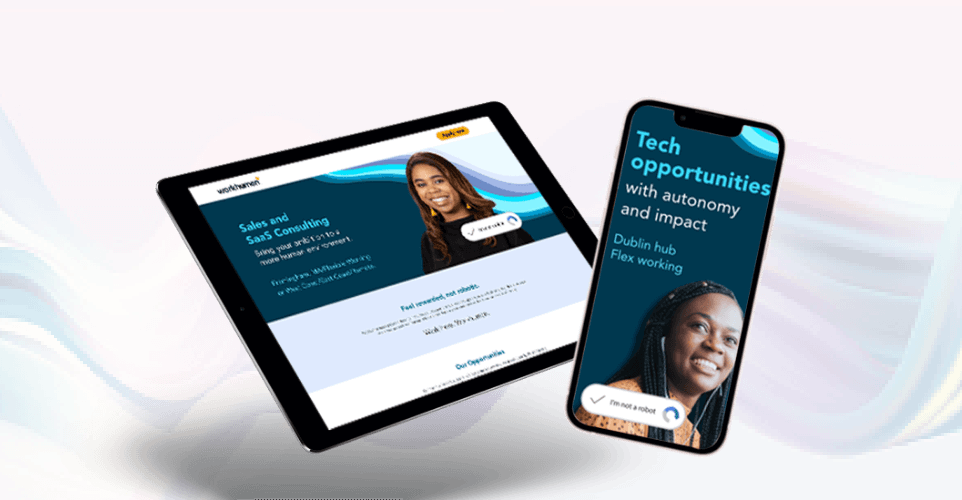With COVID-19 having huge impacts on all aspects of the workplace, it’s no surprise that it’s also affecting what employees want from an employer. Employee value propositions will have to adjust to ensure they meet changing mindsets and expectations of both candidates and existing employees.
Before the outbreak of COVID-19, experts predicted that 2020 was the year for promoting an integrated approach to work, empowering employees to focus on personal development and finding purpose in their work. It was thought that employees wanted work that contributed to society and to feel as though they were achieving something no matter what their role in the business. EVPs would have to alter as a result.
Now that our lives have changed significantly and we prepare to enter a new normal, are these EVP trend predictions still valid?
Emphasis on employee perspective
2020 was supposed to be the year that employees held power. Businesses would have to begin to picture everything from their perspective to create a valid and relevant EVP which would resonate with, attract and retain top talent.
Employers will need to take their employees wants and needs into consideration when refining their EVP if they’re going to keep hold of their people post-COVID, as the war on talent will be tight. Tensions are high in all workplaces, and people are seriously reconsidering their futures, employers need to ensure their people feel valued and the most significant way to do this is gain and idea of their perspective. Employees hold an honest perception of a brand and what improvements need to be made to the workplace culture, they have the best sense of what it’s like to work in an organisation at all levels and adaptations that would work well.
Owing to this, candidates trust a company’s employees three times more than the company itself when it comes to providing credible information about company culture. COVID-19 will emphasise this, as it will be employees that have had to weather the storm and adapt to changes. Of course, leaders will say they handled the crisis well and supported staff as best they could, but employees will provide real insight. Therefore, it’s vital that employees are involved in crafting and promoting an employer brand proposition. Over 60% of organisations across the world have an EVP, but the core values are not well known throughout the organisation by the people that work within it. 2020 and post-COVID culture will change this.
Expect to see more employee testimonials, stories and videos to promote employer brands as well as user-generated content. A company’s employees have, on average, ten times more LinkedIn connections than the company has followers, so it’s worth getting everyone involved in refining an EVP to be proud of and promoting it as an employer brand.
Personalised employer brand
It’s thought that to attract top candidates, companies will have to consider personalising their employee value proposition. But be warned, this doesn’t mean giving individual employees privileges and perks that others don’t, that would never reflect well on an employer. Instead, it means tailoring the messaging when you promote your EVP so that you emphasise the factors that will appeal to specific audiences and “ideal candidates”. For example, tech talent will care more about the technology and equipment available to them than sales talent. The key to attracting a diverse and multi-talented workforce lies in the messaging you use to reach out to them.
After COVID-19, we can expect an emphasis on the emotional elements of an EVP too. Throughout the crisis, brands have had to adapt messaging to meet general public emotions and attitudes, and this will not change. We’re coming out of a tragedy and emotions will be high. Messaging needs to connect with audiences on an emotional level as well as a personal one; generic messaging will get you nowhere. Instead, think about emotional motivations and drivers for your employees, how can you promote these aspects of your EVP? It’s the emotional connection to a brand that will encourage employees to stay and attract new talent.
Multi-generational workforce
A huge trend for EVPs in 2020 is expected to be a focus on a multi-generational workforce. With millennials estimated to make up 75% of the workforce by 2025, what they value in a workplace should be taken seriously, and your EVP framework and messaging should be adapted to appeal to them. However, it doesn’t mean you can discount your loyal existing employees, particularly after the COVID-19 crisis. Your employees have knowledge and experience that is an invaluable plus, they’ve been faithful and stuck by you throughout the pandemic. Keep in mind that different generations want and expect different things. Employers must find a happy medium in what they offer employees as well as adapt messaging to resonate with multiple generations if they wish to be seen as a top employer post-COVID.
Building talent brands at a global level
Employer branding experts predicted that this year there would be a considerable focus on building global talent brands, raising awareness and building a unified front with each region having its personality. COVID-19 has meant that many individuals and companies can work remotely; this is likely to continue for many employers in the long term. Remote working opens the pool of talent to brands on a global scale. If we can work remotely, we can work from anywhere, so what’s to stop brands hiring international talent and planning for global expansion? This means it’s likely that once the storm passes and brands are more aware of their financial situation, embedding remote work into their EVP and promoting themselves beyond a localised level will be a huge trend.
Emphasis on social media
It’s reported that the use of social media to communicate employer brand messaging was already expected to grow by 70% in 2020. However, the COVID19 crisis has left us all more reliant on technology, and many of us have found ourselves using social media more than ever. Many have lost jobs or been furloughed during the coronavirus crisis, which means they’ll be spending more time on social media during the day; making it an ideal platform to reach both active and passive candidates. Pre-COVID around 80% of job seekers said they were likely to use social media in their job search, post-COVID we can expect this figure to increase. Social media has become one of the main ways of communicating, particularly for brands that have had storefronts and offices closed. If organisations didn’t see the value in it before, they certainly will now.
It’s predicted that after coronavirus companies will increase their spending on talent branding efforts to target the potential candidates across all of the different social media platforms and social media will remain the top digital channel to maximise results.
Who owns employer branding?
Employer brands have often been a bit of a grey area in terms of ownership. Some CEOs believe they’re responsible for building an employer brand whereas in other organisations HR or even marketing departments are in charge. Post-COVID as employee value propositions and their subsequent employer brands become more crucial in attracting top talent; these departments must collaborate. It’s no longer good enough to project the CEOs desired construct of their workplace. The messages you portray as an employer must represent the entire organisation honestly as well as help you to stand out in a competitive market. By collaborating, your employer brand will be more authentic, and the way you choose to promote it will be much more creative with more minds involved.
Employer brand and consumer brand will connect
In the past, your employer brand has always been a separate entity from your corporate brand; consumers may love your products but not particularly want to work for you and vice versa. However, this is all about to change. COVID-19 made the general public shift focus, brands that mistreated staff and didn’t take care of their safety saw huge impacts on their reputation and external perceptions. With safety concerns and financial worries consuming the news, it’s no surprise that this is the new focus for consumers and candidates alike.
Experts expected that employer brands and consumer brands would become connected in the next five years. After a global pandemic, it’s clear that your treatment of employees reflects how people view your company as a whole.
The idea of merging your employer brand and consumer brand originally stemmed from what candidates would find when they researched a company before applying for a job. A jobseeker roughly two hours researching their potential new employer. During that time, they will not only view a company’s website, but its LinkedIn, Glassdoor and other social media to help them understand how employees feel about working there.
Our Brand & Insight team can conduct in-depth research which will help you to refine your EVP to be relevant and substantial after the pandemic. Our creative and digital teams are experts in creating and promoting employer brands that resonate with a range of audiences, so if you need any assistance reaching top talent, contact us.








